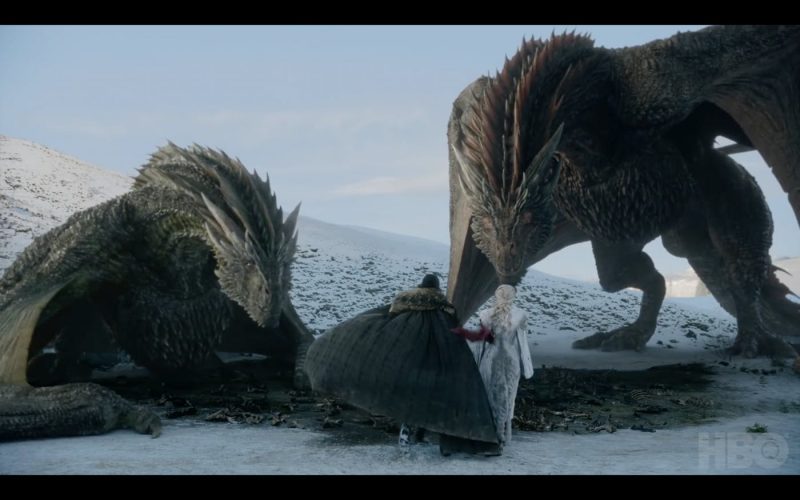Dragons are one of the prime attractions of the popular HBO fantasy show ‘Game of Thrones‘ and here the dragon connoisseur of the series, Sven Martin, reveals how the dragons are actually made. Martin works to animate the dragons for an international effects company, Pixomondo, as reported by CNet.
Martin reportedly works with a team of 30 to 40 artists, but the total number of artists involved in the special effects of the show, which includes ‘castles, wights, ships and other elements’, comes to around 300. The visual effects supervisor, Martin, has an impressive repertoire of having acted in films like ‘The Hunger Games‘, ‘Super 8’ and ‘Star Trek Into Darkness’. Notably, his work on ‘Game of Thrones’ has won him two Emmy Awards. This is unsurprising as Martin has had previous experience working on dragons. He explained, “Fun fact is that my graduation film in film school was a short about a father dragon showing his son how to fight off dragons. For the short, I had done plenty of research about all type of mythological dragons and was therefore well-prepared.”
In ‘Game of Thrones’, Martin is assisted by Dan Katcher, who also worked on ‘The Hunger Games’ and ‘The Amazing Spider-Man‘. Katcher was the creature designer who came up with the designs for the three dragons on the show, Viserion, Drogon, and Rhaegal. For those unaware, the dragons started off as eggs, given to Daenerys Targaryen played by Emilia Clarke, but she managed to hatch them, earning the title Mother of Dragons. Over the course of the seasons, the dragons have grown to full size and after a brief unruly phase, have returned to their mother. Spoilers ahead, but Season 7 saw Viserion being turned into an ice dragon by the Night King, the leader of the White Walkers. Season 8, the final season, which will air on April 14, 2019, is expected to feature the dragons in a major way, as they are likely to tip the scales of the battle.
Coming back to the making of the dragons, Martin said that “No puppets or animatronics were ever used on Game of Thrones” and every scene involving dragons were completely generated on computers. However, the show sometimes required physical parts of the dragons to be built when Daenerys needs to ride them. Since she needs a 3D dragon, to make interaction easier, either movable platforms or styrofoam representations of the dragon’s back she is riding, were built by the special effects crew. For the flying scenes, a movable ‘buck’ akin to a flight simulator is used. Post-production, Martin simply replaces the physical parts of the dragon with the computer-generated realistic substitute. However, making Daenerys climb onto the dragon’s back was a rather challenging task as Martin outlined. He said, “Making Dany climb up on Drogon’s back was actually one of the most challenging tasks, both for design and animation. He’s so big! We didn’t want to cheat, so we came up with a combination of using the wing as an elevator and neck spikes as climbing handles. The production team built a special mechanical rig operated in sync with our pre-animation to help (actress) Emilia Clarke step (up) and lift down on set.”
Martin also went into detail about how they built these mighty creatures from inside out and still managed to make these fantastical beasts look realistic. He said, “Following the idea of grounding the dragons in reality, we started to build them from inside out, meaning having a real skeleton structure as the base, muscles with fat and skin on top,” he said. “Based on the initial design and the baby (dragon) model from season 1, we altered the design more towards birds, knowing the dragons have to fly in later episodes. Researching bird and bat anatomies led us to increase the chest bone and change wing body proportions. For the skin color patterns we went even further, picking ideas from frogs or cheetahs. Every detail of the dragons has a counterpart in the animal world.”
Undoubtedly, with so much effort having gone into making the dragons, their use and interactions on ‘Game of Thrones’ feel so natural. Martin has every right to be proud of his work and involvement in the creation of these grand creatures, bringing them to our screens.

